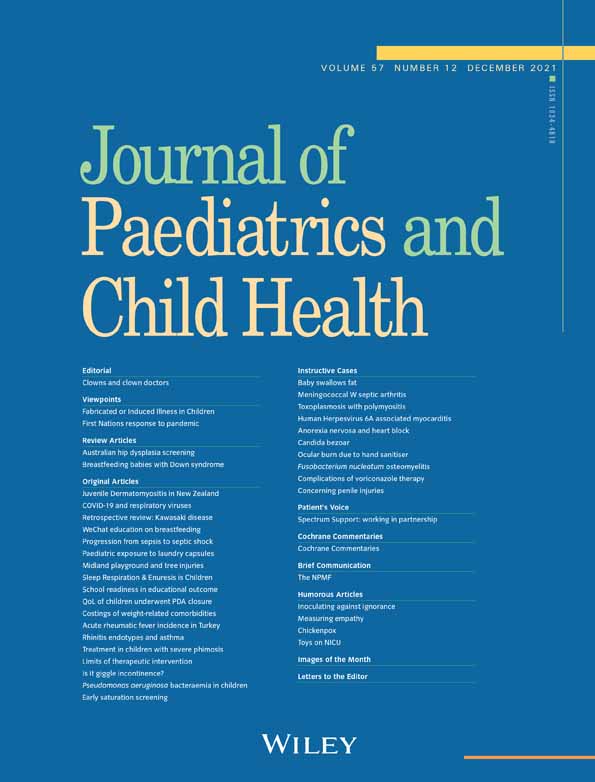Incidence, severity and clinical manifestations of juvenile dermatomyositis among Maori and Pacific Island compared to European children
Conflict of interest: None declared.
Abstract
Aim
To describe the incidence, demographics, diagnostic clinical manifestations and long-term outcomes of juvenile dermatomyositis (JDM) in Maori and Pacific Island compared to European children.
Methods
A chart review was conducted of children with JDM seen by the Starship Rheumatology service between 2000 and 2020. Diagnostic clinical manifestations, demographics, disease course and significant complications were collated. The incidence, clinical manifestations and severity of JDM were determined and compared between ethnic groups, in particular Maori and Pacific Island, and European children.
Results
The overall incidence of JDM was 0.24/100 000 per year with no significant ethnic variation. Maori children were less likely to achieve a clinical response (71 vs. 100%, P = 0.08), Maori and Pacific less likely to achieve clinical remission (56 vs. 40%, P = 0.69), with Maori (71 vs. 44%, P = 0.37) and Maori and Pacific (60 vs. 44%, P = 0.69) children more likely to follow a chronic course compared to European children. Calcinosis (50 vs. 13%, P = 0.07), cutaneous vasculopathy (30 vs. 0%, P = 0.05) and interstitial lung disease (30 vs. 6%, P = 0.26) were more common in Maori and Pacific compared to European children.
Conclusion
The incidence of JDM among a cohort of New Zealand children was established, with Maori and Pacific children more likely to experience a chronic continuous disease course, calcinosis, cutaneous vasculopathy and interstitial lung disease compared to European children.




